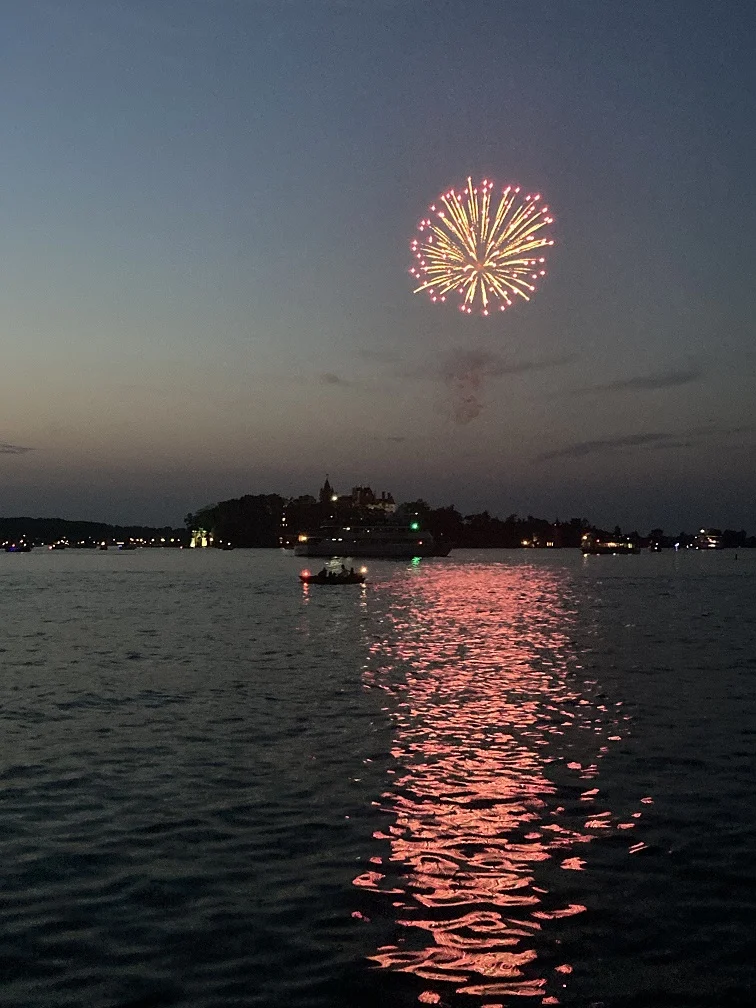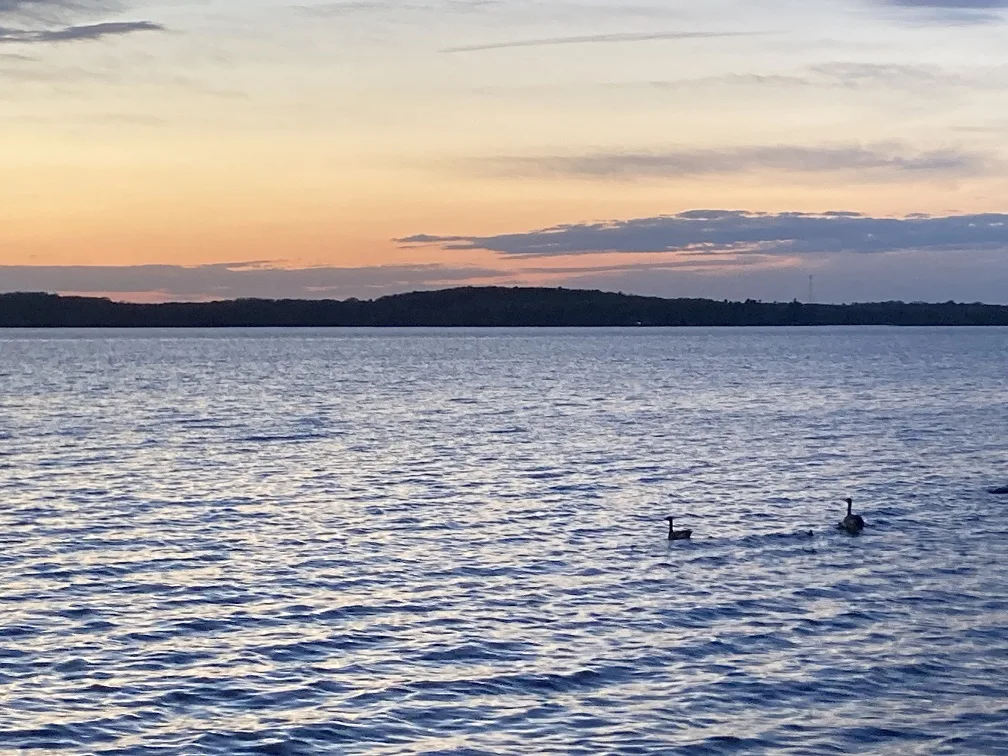Have you ever wondered how the St. Lawrence River got its name? In this post, learn the history of the name of this iconic river.

I remember the first time that I saw the St. Lawrence, and it immediately captured my imagination, as I am sure as it has done with countless others. It was in Montreal, the island city in Quebec, Canada that sits on the shores of the river.
This river, which is part of the one of the world’s largest watersheds, is an incredibly important aspect of the culture and history of every community within the entire region, from Anticosti Island, Quebec, where the Gulf of St. Lawrence meets the St. Lawrence River, to the Thousand Islands Region of New York and Ontario.
Who discovered the St. Lawrence River?
The St. Lawrence River was discovered by Native Americans who arrived to the region at least 20,000 years ago, and possibly as long as 30,000 years ago. Since then, whether frozen or flowing freely in the summer and fall, the river has been a crucial part of the lives of the people who live near it.
The St. Lawrence River region saw very little contact with people from Europe until French explorer Jacques Cartier first sailed there in 1534. It is because of this contact with Europeans that the river has become known as the “St. Lawrence River”, or the “Saint Laurent” in Quebec.
Who gave the St. Lawrence River it’s name?
The river was named by Jacques Cartier, the French explorer. He first sailed into the estuary of the river on August 10, which happens to be the feast day of Saint Lawrence, a deacon in the Catholic church who died in 258 AD.
Many cultures where Catholicism is followed have the tradition of naming people and places after the saint for each day. It followed within the tradition of the time that the river, which must have made a big impression on Cartier and his fellow passengers, carry the name of this saint.

What was the original name of the St. Lawrence River?
The St. Lawrence River has had many names in different languages over the thousands of years that humans have lived near it. We know many of these names, and likely there are more that have been lost to history.
One reason that the river has different names is because it is almost 750 miles long, which meant that it flowed, and still flows, through communities of people who speak different languages.
It even flows through more than one country!
Even though most people in the United States call the river the “St. Lawrence River”, you will learn below why not everyone calls the river by this name, even today.
Kaniatarowanenneh
This is the name for the river given by the Mohawk, Kanienkehaka, or Akwesasne, and the Tuscarora indigenous peoples. These groups live on both sides of the US/Canadian border and speak a language with a common origin and share a history in the region going back many thousands of years.
The name Kaniatarowanenneh, which means “big waterway” is still used by many Native Americans in both Canada and the United States to refer to this amazing river, which continues to be central to their culture and history.
Magtogoek
Magtogoek is an Algonquin word for the river, and it means “the walking path” or “the way that walks”, literally. This name is in use today.
Wepistukujaw Sipo
The Nitassinan people of the Labrador Peninsula near the Gulf of St. Lawrence in Quebec call the river Wepistukujaw Sipo. This is an interesting part of the river because it is where the river meets the ocean, and it is much further north than the beginning of the river near Lake Ontario.
Saint Laurent / St. Lawrence
The most commonly used name for the St. Lawrence River is either the French Saint Laurent, or the English St. Lawrence, and you have already learned the origin of this name. If you drive on the Quebec side of the border and cross the St. Lawrence, you’ll see little signs with the name Saint Laurent.
The first time I didn’t even recognize that it was the same river! Of course, my French is pretty non-existent.
Other indigenous names include the following, among many others:
- Kchitegw
- Wsogenaisibo
- Moliantegok
- Roiatatokenti
- Laooendaooena
- Micta sipi
Additional names in English include:
- Cod River
- Great River
Other names were given to the river in French before the “final” name of “Saint Laurent” was chosen:
- Grand fleuve de Hochelaga
- Grande rivière de Canada
- Rivière du Canada
I’m certain that the St. Lawrence River will likely be given additional names over the next thousands of years. Our generations are not going to be the last humans impressed with this beautiful and powerful river.

If you know of any indigenous names for the St. Lawrence River that I missed, please let me know! I tried to be as thorough in my research as possible, but I am also interested in correcting any incorrect information or including any important details that may have been left out when it comes to writing about the indigenous history in the area.
Conclusion
I hope that this post has helped you understand more about why the St. Lawrence River is so important to the entire region, including the North Country region of New York, but also the rest of the United States and Canada. And, I hope you learned what you came to learn, namely, how the river got its name (and what its name was before!).
If you have any questions about something that you read here, or if you would like to share your own story about the river, please leave a comment in the discussion below.
Thanks for reading today!
